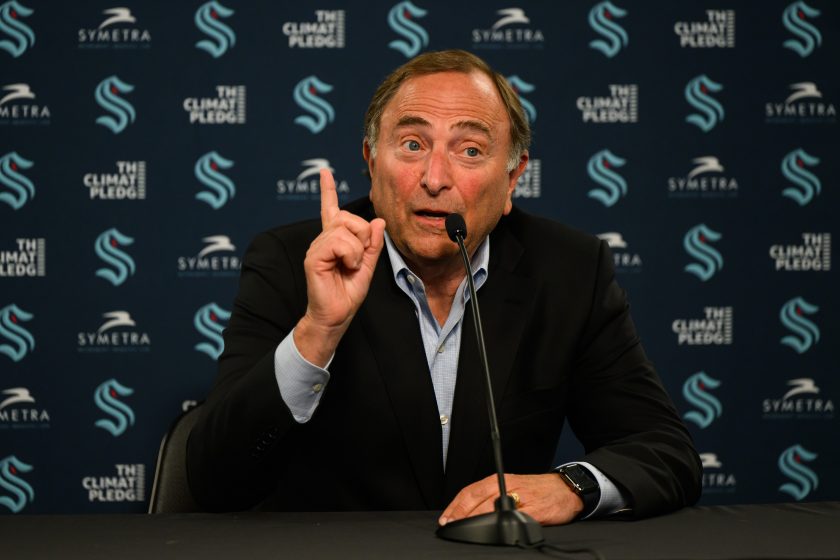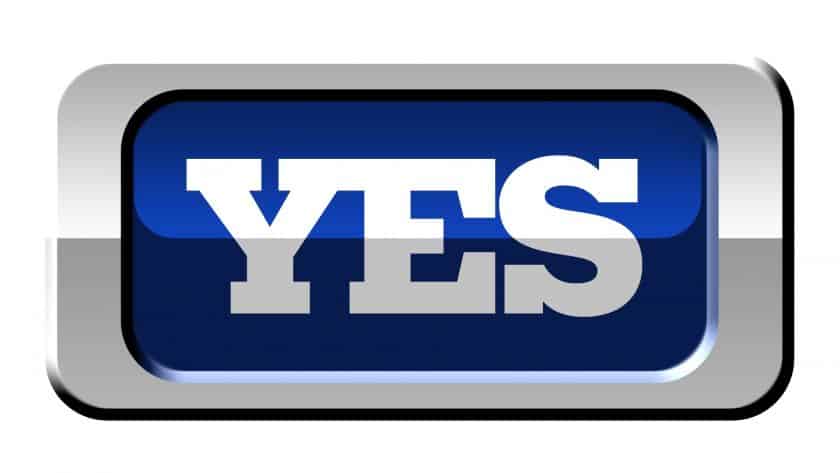It Took Barclays Center Two Years To Acknowledge Its Mistake

After three years of dodging questions about Barclays Center’s splintered relationship with the New York Islanders, Brett Yormark seems to finally be coming around.
[dropcap]B[/dropcap]rett Yormark admitted in an interview with Sports Business Daily’s John Lombardo Monday that “the economics just don’t work” when it comes to Barclays Center’s financial relationship with the New York Islanders.The Barclays Center CEO no longer maintains that it’s been a smooth ride for the two entities, stating publicly for the first time that “It’s a Long Island team trying to create a fan base in Brooklyn, and to date it has been met with very modest success and not at the numbers we have hoped.”
This is a noticeable change in attitude for a man who has been reliably optimistic throughout a rocky transitional period. Though there had been red flags since the Islanders moved to the boro before the 2015-16 season, Yormark had been sanguine, if not cheerful, of both parties’ prospects.
Things started to change in November 2016, when Bloomberg Business’ Scott Soshnick broke the news that “a financial projection shared with potential investors showed that the Islanders won’t contribute any revenue after the 2018-19 season.” Without a positive return on investment, Barclays wanted out.
For a while, it seemed like it was mostly speculation, without much of a basis. The Isles were putatively happy with their $53 million yearly payout and the Barclays Center was going to weather the storm. But as time went on, the tides seemingly turned. Writers now accept the general notion that the Islanders are looking for a new home, and on Monday, majority owner Jon Ledecky confirmed that the team would be throwing all of its eggs into the Belmont Park basket. He also confirmed that they would continue to play at the Barc next season.
[sc name=”Islanders Center” ]This all begs a number of questions: Why were the initial projections so optimistic? What went wrong? Where do the two parties go from here?
Bruce Ratner, the majority owner and developer of Barclays Center, gloated at the introductory press conference how the stadium offers “great accessibility for… future fans.” The hope, as portrayed by Cal Clutterbuck in a rare Comedy Central cameo, was that people who had never seen hockey before would become interested, and sooner or later become paying customers.
Yormark, in this vein, promised that “Barclays Center will offer the Islanders with an exciting opportunity to grow their fan base and to build their brand.” This didn’t happen to the degree Barclays ownership wanted it to, Soshnick believes, which is “a clear signal that the team won’t play there.”
But perhaps the pact was flawed to begin with. On Monday, Ledecky spoke for a large portion of the fanbase when he commented that “I guess he’s [Yormark] saying the people on their side didn’t make a good deal.” These are strong words from an owner who typically refrains from them.
The terms of the deal were especially curious: the Islanders gave up control of the business side of operations in exchange for a lump sum of roughly $53 million a season. Barclays Center would be able to generate revenue from ticket and suite sales and promotions. With attendance figures lagging, it’s no wonder this peculiar arrangement didn’t last.[sc name=”Into the Isles Podcast Right” ]
“It was a marriage of convenience, but when the convenience is over, you usually get a divorce,” said a top government official briefed on the matter, to Dan Martin and Rich Calder of the New York Post. “The arena was never built for hockey, so it was always destined to be a failure. I think most people involved [in the deal] didn’t truly believe they would be there long.”
While the Islanders and Barclays Center appear to be heading in different directions, it’s a little unclear where that may lead. New York State formalized a request for proposals for the long-term lease of the property at Belmont Park, and the Isles submitted a bid. Ledecky insists that the organization is solely focused on securing this land, but things could fall through, and then they’d be left without a home.
Barclays seems ready to move on from hockey, with only the occasional college matinee to host, but that could change if, for some unknown reason, they are presented with a different, better offer.
When Charles Wang was the sole majority owner of the team, in 2009, he told Newsday that “If I had the chance, I wouldn’t do it again,” a clear rebuke of his decision to purchase a stake in the franchise. And who could blame him? He spent $208.8 million to keep the club operating — an average of $23 million per year.
NHL deputy commissioner Bill Daly confirmed Wang’s numbers, and continued, “Yes, we’re aware the Islanders lose money, a significant amount of money.” The fact remains that no matter what the Islanders’ ownership group ends up doing, it likely won’t be enough. New York is the league’s 17th most valuable franchise, and much of that is derived from their stake in the media market. There, unfortunately, isn’t as much room to expand as they would probably like, as the Barclays Center experiment shows.
For the economics to work, wherever the Islanders’ next stop may be, one thing is for certain: It’s going to start with the current fanbase, which for all of the talk of its minuteness, is a whole lot better of a starting point than anything anyone else has proposed.
[sc name=”Islanders Link Next” link=”https://elitesportsny.com/2017/10/10/new-york-islanders-jon-ledecky-clarifies-arena-situation/” text=”Jon Ledecky Clarifies Isles Situation” ]Justin Weiss is a staff editor at Elite Sports New York, where he covers the New York Islanders and Brooklyn Cyclones. In 2016, he received a Quill Award for Freelance Journalism. He has written for the Long Island Herald, FanSided and YardBarker.






